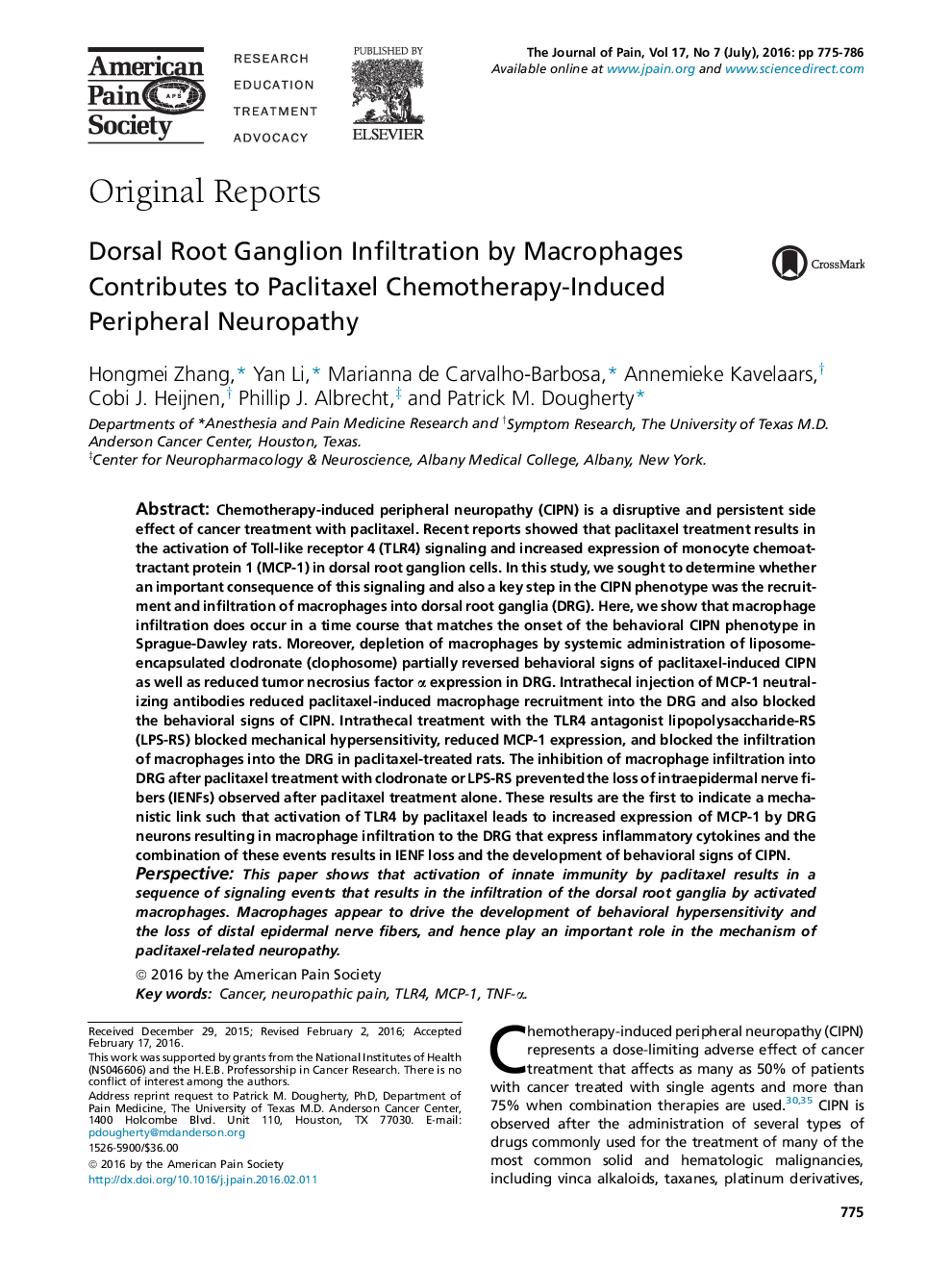| کد مقاله | کد نشریه | سال انتشار | مقاله انگلیسی | نسخه تمام متن |
|---|---|---|---|---|
| 2731968 | 1566718 | 2016 | 12 صفحه PDF | دانلود رایگان |
• Innate immunity is engaged by paclitaxel treatment to generate peripheral neuropathy.
• Blockade of TLR signaling attenuates the development of all signs of CIPN.
• Blockade of MCP-1 signaling prevents infiltration of macrophages, behavioral signs, and loss of skin IENFs.
• Elimination of macrophages attenuates the behavioral and skin changes associated with CIPN.
Chemotherapy-induced peripheral neuropathy (CIPN) is a disruptive and persistent side effect of cancer treatment with paclitaxel. Recent reports showed that paclitaxel treatment results in the activation of Toll-like receptor 4 (TLR4) signaling and increased expression of monocyte chemoattractant protein 1 (MCP-1) in dorsal root ganglion cells. In this study, we sought to determine whether an important consequence of this signaling and also a key step in the CIPN phenotype was the recruitment and infiltration of macrophages into dorsal root ganglia (DRG). Here, we show that macrophage infiltration does occur in a time course that matches the onset of the behavioral CIPN phenotype in Sprague-Dawley rats. Moreover, depletion of macrophages by systemic administration of liposome-encapsulated clodronate (clophosome) partially reversed behavioral signs of paclitaxel-induced CIPN as well as reduced tumor necrosius factor α expression in DRG. Intrathecal injection of MCP-1 neutralizing antibodies reduced paclitaxel-induced macrophage recruitment into the DRG and also blocked the behavioral signs of CIPN. Intrathecal treatment with the TLR4 antagonist lipopolysaccharide-RS (LPS-RS) blocked mechanical hypersensitivity, reduced MCP-1 expression, and blocked the infiltration of macrophages into the DRG in paclitaxel-treated rats. The inhibition of macrophage infiltration into DRG after paclitaxel treatment with clodronate or LPS-RS prevented the loss of intraepidermal nerve fibers (IENFs) observed after paclitaxel treatment alone. These results are the first to indicate a mechanistic link such that activation of TLR4 by paclitaxel leads to increased expression of MCP-1 by DRG neurons resulting in macrophage infiltration to the DRG that express inflammatory cytokines and the combination of these events results in IENF loss and the development of behavioral signs of CIPN.PerspectiveThis paper shows that activation of innate immunity by paclitaxel results in a sequence of signaling events that results in the infiltration of the dorsal root ganglia by activated macrophages. Macrophages appear to drive the development of behavioral hypersensitivity and the loss of distal epidermal nerve fibers, and hence play an important role in the mechanism of paclitaxel-related neuropathy.
Journal: The Journal of Pain - Volume 17, Issue 7, July 2016, Pages 775–786
